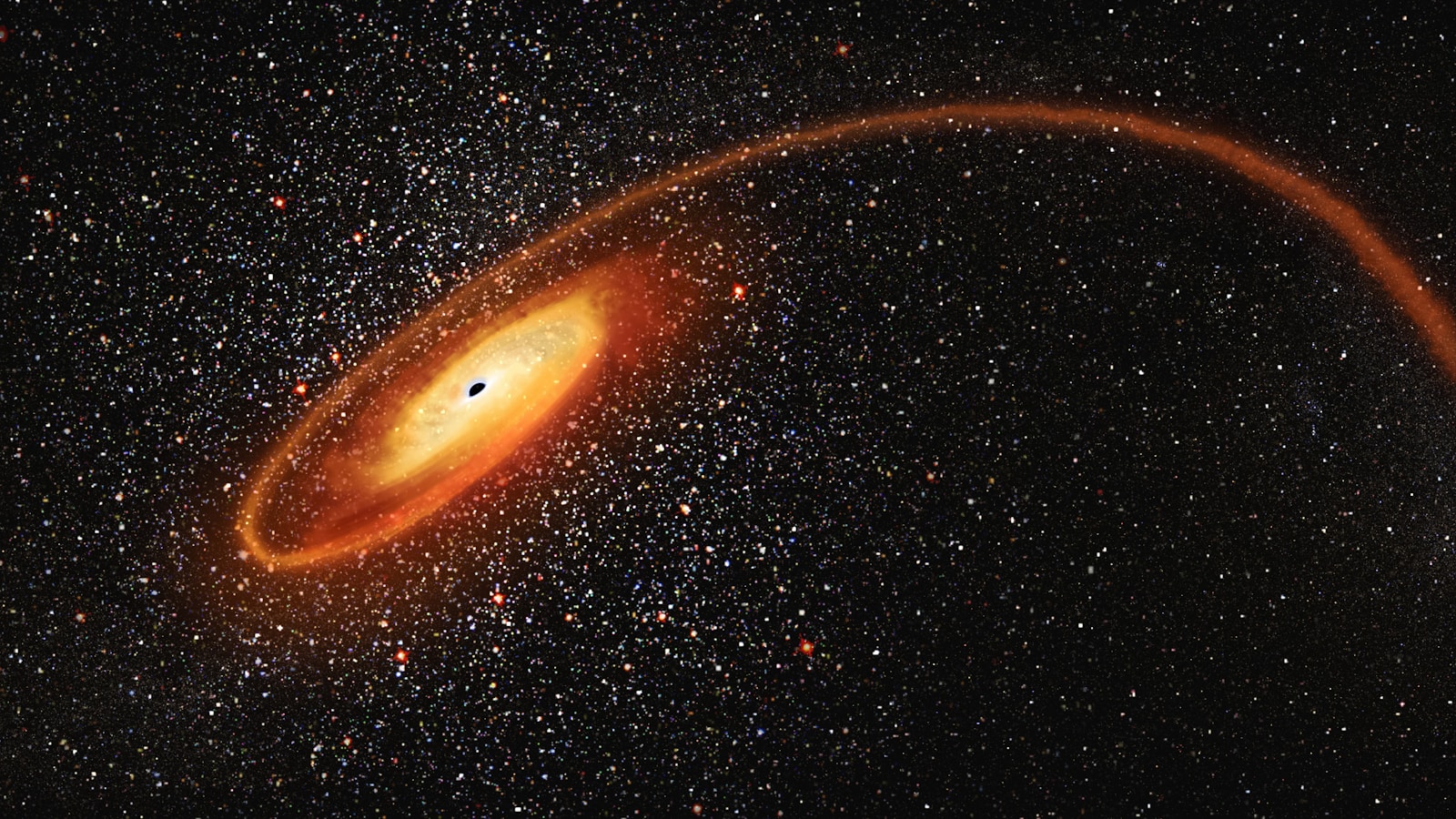Key Takeaways:
- Astronomers spotted a rare five-image Einstein’s Cross.
- Light from distant galaxy HerS-3 bends around galaxies and dark matter.
- Observations reveal a vast dark matter halo with trillions of solar masses.
- This discovery deepens our grasp of cosmic evolution and dark matter.
Einstein’s Cross Shines in Five-Image Wonder
Astronomers recently uncovered a spectacular event in deep space. Light from a faraway galaxy called HerS-3 curved around two foreground galaxies and an enormous dark matter halo. As a result, we see five distinct images of the same galaxy. This phenomenon is known as an Einstein’s Cross. It offers a unique window into how light and gravity shape our view of the universe.
A Rare Gravitational Lens Discovery
Gravitational lensing happens when a massive object bends light passing nearby. In this case, two galaxies and a hidden dark matter halo acted like a cosmic magnifying glass. Consequently, they distorted and amplified the light from HerS-3. Normally, we expect four images around the lensing galaxy. However, astronomers recorded five. This makes the event extremely rare and exciting.
First, telescopes like ALMA and Hubble captured detailed images. Next, researchers analyzed the positions and brightness of the five images. They confirmed that all images belong to HerS-3. Then, they modeled the mass distribution of the lensing galaxies and dark matter halo. This allowed them to map how gravity bent the light so precisely.
The Five-Image Pattern of Einstein’s Cross
In most cases, an Einstein’s Cross yields four images arranged in a cross shape. Yet, the extra fifth image here sits almost in the center of the lens. It appears because the dark matter halo adds more gravity to the mix. Moreover, its mass is so large that it disturbs the normal pattern. As a result, this anomaly offers fresh clues about unseen mass in space.
Observers noted the extra image is fainter than the outer four. This made it hard to find at first. Fortunately, advanced imaging techniques overcame that challenge. By combining data from multiple telescopes, scientists enhanced the contrast. Thus, they revealed the hidden fifth image clearly. In addition, this technique helps spot similar anomalies in future studies.
Uncovering a Massive Dark Matter Halo
Dark matter does not emit or absorb light. Yet, it exerts gravity just like ordinary matter. Therefore, researchers used the lensing effect to estimate its mass. Their models indicate the halo contains trillions of times the mass of our Sun. In fact, it outweighs the visible galaxies by a large factor.
Moreover, the shape of the dark matter halo appears extended and uneven. This contrasts with simpler halos often seen in simulations. It hints that dark matter may clump or spread in unexpected ways. Consequently, the five-image Einstein’s Cross offers a rare probe into dark matter’s true nature.
By studying the deflection angles, astronomers traced the dark matter distribution. They found the halo extends well beyond the visible galaxies. As a result, it affects light on a larger scale than previously thought. This finding challenges existing theories and encourages new simulations.
The Impact on Cosmic Evolution
Understanding dark matter’s arrangement helps us learn how galaxies form. Since dark matter guides the clumping of gas and stars, its structure shapes cosmic history. Thus, discoveries like this five-image Einstein’s Cross refine our models of galaxy growth.
Furthermore, gravitational lensing lets us see galaxies otherwise too faint or distant. For example, HerS-3 sits billions of light-years away. Without lensing, we could not study its properties in detail. Yet, the lens magnifies its light and boosts our instruments’ power. Therefore, it acts like a natural telescope, revealing the universe’s past.
In addition, observing more rare lenses helps test cosmological constants. It allows scientists to measure how fast the universe expands. Also, it sheds light on dark energy’s role. As a result, each new lens boosts our knowledge of fundamental physics.
Looking Ahead
This newly found Einstein’s Cross marks only the beginning. Scientists now plan to survey larger sky areas. They will search for other odd lensing patterns. With next-generation telescopes, we expect to find more anomalies. Each one will sharpen our view of dark matter and cosmic evolution.
Finally, this event underscores the power of international collaboration. Research teams across continents shared data and expertise. Together, they pushed the boundaries of what we can observe. Their work shows how cooperation drives discovery.
Common Questions
What makes an Einstein’s Cross so special?
An Einstein’s Cross splits a single source into multiple images. It happens when a massive object bends light perfectly. This alignment is rare, so such events are special windows into gravity.
Why is the fifth image in this Einstein’s Cross important?
The extra image signals a massive dark matter halo. It alters the usual four-image pattern. Thus, it reveals hidden mass and helps map dark matter’s shape.
How do telescopes like ALMA and Hubble work together?
ALMA captures radio waves, while Hubble sees visible and ultraviolet light. Together, they provide a complete picture. Combining their data sharpens faint details and uncovers hidden features.
How will this discovery affect astronomy?
It will refine models of dark matter and galaxy formation. Moreover, it will guide future sky surveys to spot similar anomalies. Ultimately, it brings us closer to understanding the universe’s secrets.

